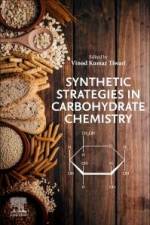av Vinod Kumar Tiwari
2 431
Synthetic Strategies in Carbohydrate Chemistry covers carbohydrate synthesis and its widespread application in various disciplines including catalysis. Basic and advanced aspects of carbohydrates are covered, starting with a brief introduction and then followed by protection-deprotection strategies in carbohydrate chemistry, glycosidic bond formation methodology, and their impact in oligosaccharide synthesis. Recent synthetic approaches for O-glycosides, N-glycosides, thioglycosides and C-glycosides, Intramolecular Aglycon Delivery (IAD), and carbohydrate modification are discussed, as well as stereoelectronic factors that control the chemical and biochemical behavior of carbohydrates in living cells. In addition, diverse applications of synthetic carbohydrate chemistry are covered, including sugar-based chiral catalyst in stereoselective synthesis, sugar-based ionic liquids, one-pot tandem reactions in carbohydrates, total synthesis of glycoconjugated natural products, impact of sugar in drug discovery and development, vaccine development, and glycoengineering. This reference is essential reading for researchers working in synthetic carbohydrate chemistry and biochemistry, and will be useful to those working in total synthesis, novel synthetic methodology, catalysis, polymer science, glycobiology, medicinal chemistry, and process development chemistry.


